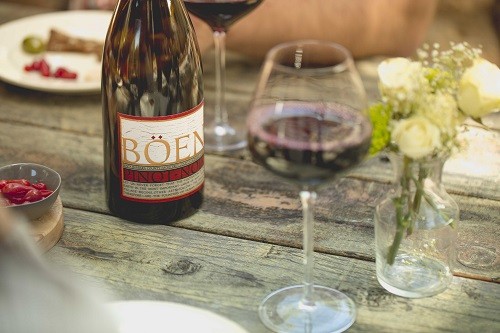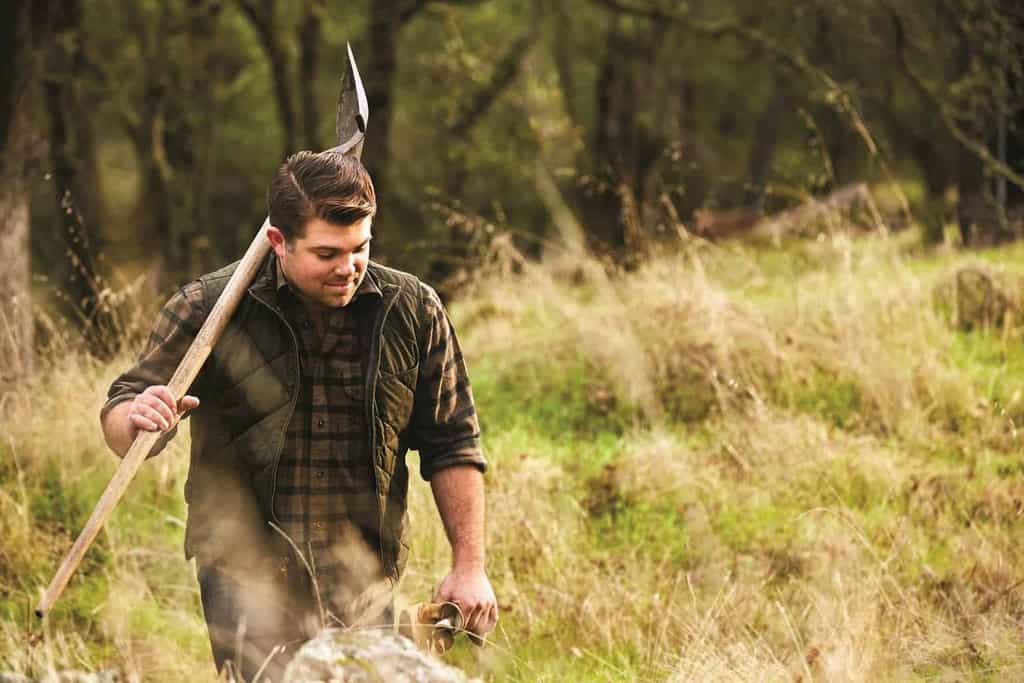Few people in the American wine industry can claim a history in the business quite like Joseph (Joe) Wagner. A fifth-generation winemaker, Joe comes from a family with a rich understanding of how to cultivate quality wines. His family emigrated to the Napa Valley area from Alsace, France in the 1850s and began planting grapes in the new frontier of California. Though prohibition and other issues plagued the area and industry throughout the years and forced the family to pursue other agricultural endeavors, they emerged determined in the 1970s with a plan.
Joe’s dad, Charles J. “Chuck” was only 19 in 1971 when his parents, Charles F. (Charlie) Wagner and Lorna Belle Glos Wagner approached him with a proposition: would he join them in building a premium winery on their land in Napa? Chuck agreed, and the rest, they say, is history. The Wagners released their very first vintage of now-iconic Caymus Vineyards Cabernet Sauvignon in 1972.
Now, the brand is synonymous with Napa Valley Cabernet and its consistent dominance in the American wine market.

Deep Roots in Wine
Chuck instilled in his children a passion for hard work and excellence, as well as a desire to carry on the family legacy of making wines of distinction. At a young age, Joe could be found working in the vineyards and learning the individual tasks of winemaking labor. Chuck required that his children choose their “own” grape to specialize in besides the family’s icon Cabernet, if they wanted to forge their way in the industry and build their own brand. By 1997, Joe had his vineyard and first Pinot Noir planting, and he was poised for success as a Pinot Noir producer.
At only 19 years old, just like his father, Joe launched Belle Glos Pinot Noir in 2001. The wine was named for his grandmother, and the young winemaker set the stage for a successful career tying family history and tradition to innovation and experimentation. He focused on vineyard designation for his brand. By showcasing the best individual Pinot Noir plantings from coastal California vineyards, Joe was able to narrow his focus on creating wines of distinction and pick the best vines and years to showcase in the bottles labeled with his burgeoning brand.
He developed several winemaking philosophies that allowed his wines to stand out amongst the competition, which gave him the opportunity to create another label in 2006 that would shake up the California Pinot Noir world.
Bringing Luxury Pinot Noir to a Broader Audience with Meiomi
There’s no doubt that Joe’s Meiomi Pinot Noir was a break-out sensation at the time of its release. It remains a standard-bearer of robust Pinots in many American consumers’ minds, though it is no longer in Joe’s portfolio. To get to the creation of a wine that would be so widely loved by such a broad audience, Joe had to approach Pinot in a way that had not been done before. After cultivating and specializing in this specific grape for about eight years before Meiomi’s release, Joe had developed a series of standards that he utilized to create a product that had mass appeal to the American wine drinker.
Pinot can be finicky. The way to discover the right time to pick the grapes at their ideal ripeness was not to just calculate sugar content, according to Joe, but to assess them based on more physiological characteristics such as leaves, seeds, and the green tissue that creates the shoot, which turns into a copper color when the fruit is perfectly ripe for picking. When the shoot is fully copper, it is ready for winter, and the green characteristics of unripe fruit are fully out of the berries, meaning that the juice will be luscious and more representative of the fuller-bodied Pinots made famous by Joe’s brands.
Through his innovative philosophy of “copper cane” harvesting, Joe made his luxury wines appealing for everyday drinkers, and he would eventually turn this philosophy into the namesake of his main brand.
Copper Cane and Innovative Technology in the Wine Industry
With the sale of Meiomi, Joe was able to consolidate his on-going experiments and wine brands forming his umbrella portfolio, Copper Cane Wines & Provisions in 2014. His view on winemaking had always been “evolve or dissolve,” and his priority of expanding and trying new things had created a pathway to continue to advance his brands based on the evolving needs and desires of the American wine consumer. Joe continues to push the envelope and try new things, which leads to further experimentation to improve the winemaking process as well as technological additions to create a more integrated customer experience with Copper Cane brands.
One example of technological enhancements that Joe has brought to wine consumers is through his recently released BÖEN brand, which utilizes innovative near field communication (NFC) wine caps.
This “tap the cap” technology tool developed by SharpEnd and Guala Closures Group, gives customers unparalleled access to information about that specific bottle of wine with a simple “tap” of their smartphone on the cap of the bottle. No longer do wine drinkers need to spend time utilizing other apps or Google to find out exactly what is in the bottle, but with a simple tap, customers are instantly connected to the brand, vineyards, winemaking process and any information that could be complementary to the wine-drinking experience.
As the demand for connectedness grows within the industry, Joe and his team have shown how they use technological progress and innovation to create a more engaging experience tying vineyard to consumer with the tap of a phone.

Experiential Wine Country Visits
Joe’s “evolve or dissolve” mindset also carries over to his philosophy on wine country tourism. A visit to wine country is no longer just a quick run-around to tasting rooms and an early night-in. As with other parts of the industry, tourism is also evolving, and consumers are looking for a more well-rounded experience that includes lifestyle components too. Joe believes that people are looking for authentic engagements with brands that truly allow them to be a part of the process that goes into creating a bottle of quality wine. In order to provide the opportunity for visitors to have a full view of the offerings of wine country, Joe’s Copper Cane tasting adventure can include a half-day of activities, including mountain biking, skeet shooting, or even a campfire at the “homestead.”
To add to a wine country visit, Joe has opened a restaurant in Downtown Napa called Avow that focuses on the culinary personality of Napa as a whole region, where the beverage list sets the stage for the occasion. Avow is a dining experience tailored to be the cultural hub of Copper Cane, offering dinner and soon, brunch, where customers are pairing perfectly crafted dishes to the notable wines that have made the region famous, not vice versa.
For more information or to book a Copper Cane winery visit, contact Lloyd Vance at Lloyd.vance@coppercane.com, 707-200-7093.
Pushing The Wine Industry Forward
With a deep respect for the history, land, and philosophies that have paved the way for his success, Joe Wagner has also taken the lead in innovating an industry rooted in tradition to create wine brands with broad appeal and direct consumer access. His attitude of evolution to bring about advancement has given him the ability to experiment when others have been more conservative, and thus provided a pathway to continued success as a winemaker and revolutionizing industry leader.

